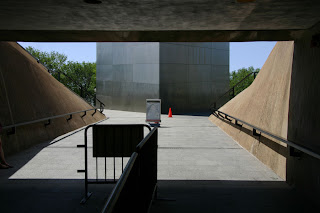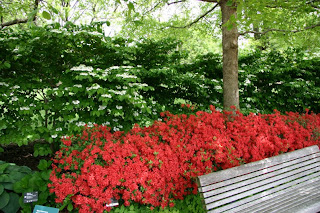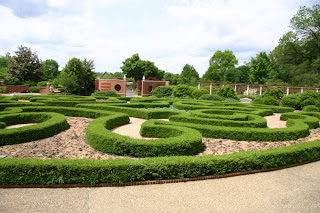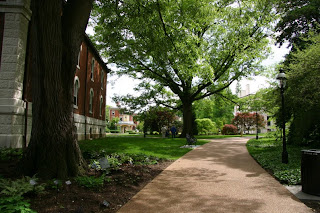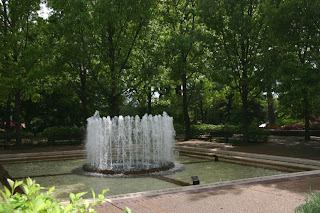 Well in case you thought I was going to leave St. Louis without seeing the the Gateway Arch... you would be totally wrong, becuase that particular site was the one thing in St. Louis that I really wanted to see the most. So here goes.
Well in case you thought I was going to leave St. Louis without seeing the the Gateway Arch... you would be totally wrong, becuase that particular site was the one thing in St. Louis that I really wanted to see the most. So here goes.Seeing the Arch from a distance and then trying to get to it was not as easy as I had first thought it would be in spite of people telling me you can't miss it. But in to tell the truth, I thought that I almost had. I say this because the street that runs right along the water front on the Mississippi River was closed because they had high winds that were blowing the water from the river right up on the street in that area so they had those closed, which made it all the more difficult, but I persisted and we final found a parking lot that was not inhibited access by the street being closed.
My first thought when we arrived at the arch and starting walking up to it, was; "boy this is a lot bigger than I thought it was!" I said that, even knowing that I could see it from miles away, but still found it to be much bigger as I stood under it.
Rising up from the west bank of the Missouri River is this 630 foot stainless steel monument designed by Eero Saarinen, and it dominates the skyline of downtown St. Louis even if some of the buildings around it seem to be taller that the structure itself.
The next kind of shock to me was that they let you in underneath the arch in a big open under ground area (which is actually called the Jefferson National Expansion Memorial). Under there, is the Museum of Western Expansion which chronicles the wave of humans that swept the American frontier westward progress to the Pacific.
Yet another shock was found as we were taking a ride in a tram / elevator device that transported us to the top of the arch. In that tram compartment (which held only 4-5 people) in a small rather cramped area, I found out that these little trams (which are attached together with maybe 7-8 or so cars, they actually let you out of those cars in an area where you can walk around and even have a view the city from up there too. My surprise was that they let you out up there, but also that you have a great view from the large windows up there. You can actually walk down stairs from the top, or you can wait for one of the cars coming up to unload before they go back down.
The view was very nice and in all the thousand of pictures of the arch that I have ever seen, I never noticed those little windows in the center top of the arch on the underside of the arch. In fact one of my shots from inside the top of the arch actual shows its shadow on the ground as well as a view of the viewing windows on top from under the arch.
So really, the whole experience sort of blew me away. I took way too many pictures of the arch, the museum and especially from the top of the arch looking at St. Louis' downtown area. In fact if you look real close, you can even see the stadium where the St. Louis Cardinals play baseball. They even happened to be playing a game while we were in town.
"We are all travellers in the wilderness of this world, and the best we can find in our travels is an honest friend" ~ Robert Louis Stevensen











